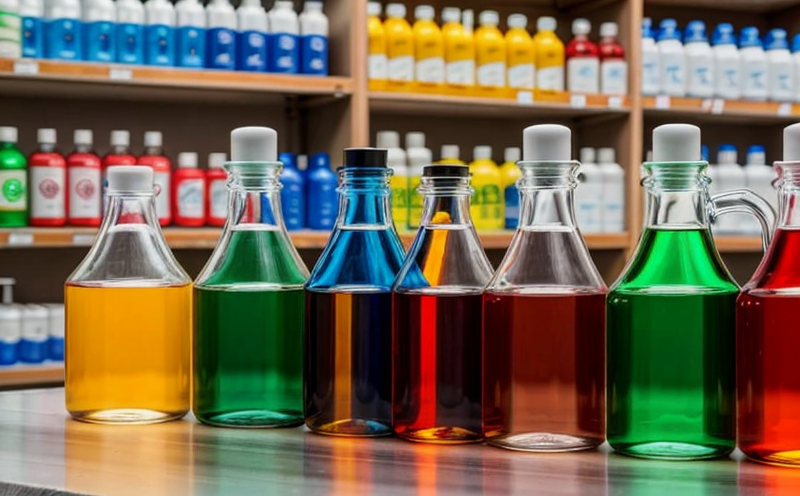UNE EN 16732 Determination of nonylphenol ethoxylates in textiles
The UNE EN 16732 standard provides a comprehensive method for the determination of nonylphenol ethoxylates (NPEs) in textile materials. NPEs are surfactants that have been widely used in various cleaning products, detergents, and industrial processes due to their excellent emulsifying properties. However, these substances can pose environmental risks as they are persistent in the environment and may affect aquatic ecosystems.
The need for regulation around NPEs has led to the development of this standard, which ensures that textiles comply with international health and safety standards. The standard is designed to provide a reliable method for identifying the presence and concentration levels of NPEs within textile products. Compliance with this standard is crucial for businesses operating in sectors such as fashion, home textiles, and industrial fabrics.
The testing process outlined in UNE EN 16732 involves several key steps which ensure accurate and reproducible results:
- Sample Preparation: The textile samples are prepared according to the specified guidelines. This includes cutting representative pieces of fabric, ensuring that they are free from any contamination or damage.
- Pretreatment: Pretreatment steps may include washing and rinsing the sample under controlled conditions to remove any surface contaminants.
- Solvent Extraction: The extracted material is then subjected to solvent extraction. This step involves using a suitable organic solvent to extract NPEs from the textile.
- Cleanup and Concentration: Post-extraction, the sample undergoes cleanup procedures such as solid-phase extraction or liquid-liquid partitioning followed by concentration if necessary.
- Analytical Measurement: The final step involves analyzing the concentrated extract using high-performance liquid chromatography (HPLC) with fluorescence detection. This technique allows for precise quantification of NPEs present in the sample.
The HPLC method described in UNE EN 16732 is highly sensitive and accurate, capable of detecting even trace amounts of NPEs within textile products. The standard specifies strict limits on acceptable concentrations of NPEs to ensure that textiles are safe for consumers and the environment.
Compliance with UNE EN 16732 not only helps businesses meet regulatory requirements but also enhances their reputation by demonstrating a commitment to sustainability and environmental responsibility. Many leading brands have implemented this standard in their supply chains, ensuring transparency and trust among stakeholders.
In conclusion, the UNE EN 16732 method offers a robust framework for determining NPEs in textiles. By adhering to these stringent testing protocols, companies can ensure product integrity while contributing positively towards environmental conservation efforts.
Scope and Methodology
The scope of UNE EN 16732 encompasses the determination of nonylphenol ethoxylates (NPEs) in textile products. This standard applies to various types of textiles including woven fabrics, knitted garments, and other textile items intended for direct contact with human skin.
Methodologically speaking, UNE EN 16732 specifies a precise procedure involving sample preparation, pretreatment, extraction, cleanup, concentration, and analysis using HPLC equipped with fluorescence detection. Each step is crucial in ensuring accurate results that reflect the actual content of NPEs within textile samples.
For effective implementation of this standard, it is essential to follow all prescribed procedures meticulously. Any deviation from these guidelines could lead to inaccurate or unreliable test outcomes. Therefore, trained personnel familiar with both laboratory techniques and relevant regulatory frameworks should carry out these analyses.
The methodology outlined in UNE EN 16732 ensures consistency across different laboratories performing similar tests. This uniformity is vital for maintaining high standards of quality control during manufacturing processes and post-production testing activities.
Customer Impact and Satisfaction
Implementing the UNE EN 16732 standard has several significant impacts on customers, particularly those involved in textile production and retail. Firstly, it enhances consumer confidence by assuring them that they are purchasing products free from harmful chemicals like NPEs.
Secondly, compliance with this standard can lead to improved business practices within companies operating in the textile industry. By adhering to stringent testing protocols, firms demonstrate their commitment to sustainability and environmental responsibility, which is increasingly important for maintaining a positive brand image.
Moreover, adhering to UNE EN 16732 helps businesses avoid potential legal issues associated with non-compliance. Many countries have laws prohibiting the use of certain chemicals in textile products, and failing to comply could result in hefty fines or even product recalls.
Customer satisfaction is another key benefit derived from implementing this standard. Consumers appreciate knowing that they are buying safe products made under rigorous quality assurance measures. This perception fosters loyalty and repeat business, contributing positively to overall customer satisfaction levels.
Use Cases and Application Examples
The UNE EN 16732 standard finds application in numerous scenarios where accurate determination of NPEs is necessary. For instance:
- Fashion Industry: Major fashion brands use this method to ensure that their clothing lines are free from harmful chemicals, thereby protecting consumers and enhancing brand reputation.
- Home Textiles: Manufacturers of bed linens, towels, and other home textiles comply with UNE EN 16732 to guarantee product safety and meet customer expectations regarding quality.
- Industrial Fabrics: Companies producing industrial fabrics use this standard to ensure that their products do not release harmful chemicals into the environment during use.
- R&D Departments: Research and development teams within textile companies utilize UNE EN 16732 as part of their ongoing efforts to innovate safer materials and processes.
In addition, government agencies responsible for enforcing environmental regulations often reference UNE EN 16732 when conducting inspections or audits. This ensures consistency in enforcement across different jurisdictions and contributes significantly towards achieving global goals related to chemical management and sustainability.





